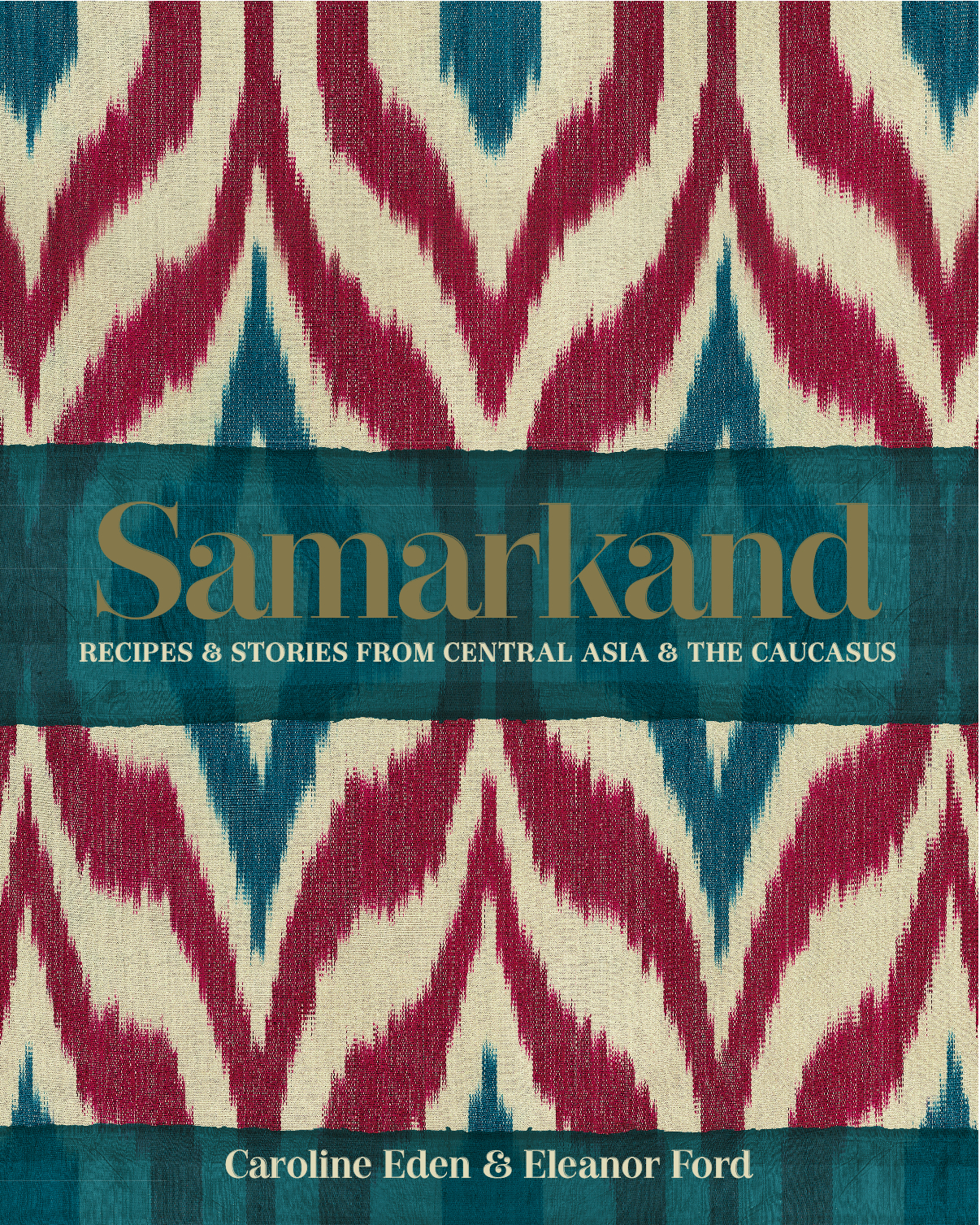Filled with ancient, simplified recipes as well as photographs and essays, Samarkand: Recipes & Stories from Central Asia and the Caucasus, written by journalists Caroline Eden and Eleanor Ford, is a love letter to the region and the peoples who left their imprint on its varied cuisine: Turks, Jews, Georgians, Armenians, Azeris, Persians, Afghans, Uzbeks, Kazakhs, Tajiks, Kyrgyz, and Uighurs. In this exclusive interview, James Blake Wiener of Ancient History Encyclopedia (AHE) speaks to the authors about their new, evocative cookbook.
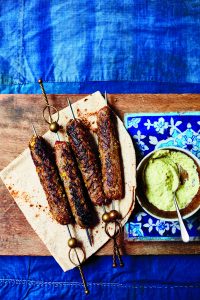
Beef Shasklik with Tahini and Pistachio Sauce. (Photo credit: Laura Edwards.)
JW: Caroline Eden and Eleanor Ford, thank you so much for speaking with me about Samarkand: Recipes & Stories from Central Asia and the Caucasus.
I wanted to ask how you became interested in Central Asia and the Caucasus? What is it that excites you about the region? The vastness of this region is certainly matched by its ethnic diversity.
CE: Initially, it was because I would been working on guidebooks and cultural magazine — Steppe — dedicated to the region and because I love Mughal architecture. Babur (1483-1530 CE), the founder of the Mughal Empire, was born in Uzbekistan and is buried in Kabul, Afghanistan. The more I traveled in the region, the more the mix of Soviet legacy and the various versions of Islam found in each country fascinated me.
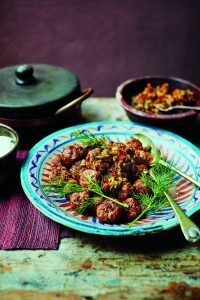
Abkhazian Meatballs with Adjika and Yogurt. (Photo credit: Laura Edwards.)
25 years after the fall of the USSR, you can still see how the Soviet-era hangover lingers on: Lenin statues are being replaced by new pin-ups, like the nomadic conqueror Tamerlane (r. 1370-1405 CE), but you will still find samovars (Russian kettles) and Soviet military medals for sale in many markets. On a personal level, there are so many good stories and adventurous moments to be found in the former USSR that keep me returning. James, in there is never a dull moment in Central Asia!
EF: To me, it is a magical part of the world. Throughout the region there are the dual influences of the ancient silk routes and the Soviet past, an interesting juxtaposition seen in everything from the fabrics to the food.
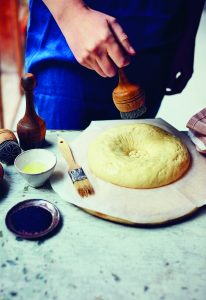
Non is the flatbread that is made across Central Asia. (Photo credit: Laura Edwards.)
JW: The dishes found within the pages of Samarkand exhibit varying influences from Russia, Turkey, Iran, and China. In your own words, how would you characterize the food heritage of this part of the world?
CE: Basically, it varies from the food of the settled people in the cities (noodles, salads, plov, shashlik) to that found out on the steppe (more basic meat and dairy influences). The influences you mention in your question are all reflected.
EF: The city of Samarkand, lying between the East and the West in present-day Uzbekistan, is a crossroads of culture. The food is heavily influenced by the surrounding regions, and it is difficult to pin down a starting point for dishes. There are flavors familiar from Persian cooking such as pistachios, pomegranates, tart barberries and heady cumin, but also Eastern European ingredients like dill and purple basil, and Chinese crossovers such as the dumplings and hand pulled noodles.
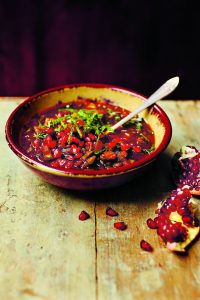
Pomegranate Soup from Azerbaijan. (Photo credit: Laura Edwards.
JW: From Turkish spoon salad to Khiva egg dumplings, Samarkand traverses the tastes and flavors from the fabled Silk Road.
Do either of you have a favorite personal recipe? If so, which one and why?
CE: Shakarob (a simple salad of flaky fatir flatbread, tomatoes, onion and yogurt) or “Tajik bread salad” as the recipe in the book is called. I write about it in my essay “Lunch on the road to Samarkand,” and it is a firm favorite.
After a hard day traveling through the dusty Fann Mountains in Tajikistan this refreshing salad was a lifesaver. I also love qutabs from Azerbaijan. At their most simple, they are herb-filled flatbreads — eaten with sour cream — and are the best local fast-food. The freshest ones I have eaten have been not in Baku’s posh restaurants but have been cooked on a convex griddle on the side of the road.
EF: A favorite of mine is the apricot and red lentil soup. Apricots are prized in Central Asia, and in season you will see them in abundance in the markets and being dried on roadsides and rooftops. In this unusual soup, you can taste the fusion of East and West as it combines cumin seeds and thyme to great effect.
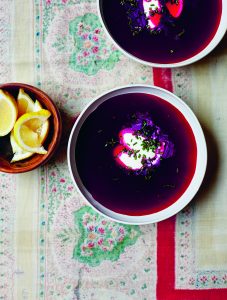
Summer Borscht with Sour Cream and Chives. (Photo credit: Laura Edwards.
JW: For those of us who are novice chefs in the kitchen, which of these ancient recipes would be good starting points? Which would you recommend for a summer evening?
CE: Definitely the “Summer Borscht” with soured cream and chives! It is easy and cooling on a hot summer night.
EF: As a starting point you have to try plov, the signature dish of Central Asia, James. Rice is cooked in a layer above spiced meat and vegetables, so it is scented by the steam rising from below. It is a surprisingly easy dish to cook at home — despite typically being made in enormous scale for Uzbek parties and wedding feasts — and transports you from your kitchen to Samarkand like no other dish.
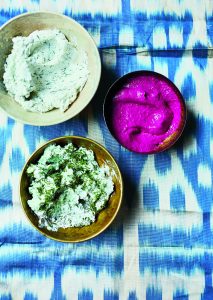
Suzma is a tangy yogurt cheese. (Photo credit: Laura Edwards.)
JW: Caroline, I was curious to know more about the process of writing the wonderfully informative essays found within Samarkand. Would you say it was difficult to frame and complete your essays?
Eleanor, on a similar note, how challenging was it to research, select, and construct the recipes found within your book? Did you have a specific approach?
CE: The concept of the book was much harder to frame than the essays, which are basically straightforward; in truth, these are food or travel articles based on experiences that I had had on the road (all pretty typical journalistic stuff). The idea behind the book was much more tricky to refine and took me a few years to mull over.
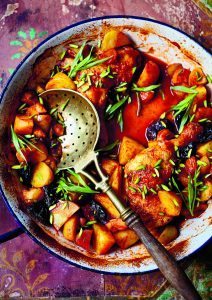
Chicken, Potato, and Prune Hotpot. (Photo credit: Laura Edwards.)
Eventually I decided to use the historical city of Samarkand as a peg to bring together the cuisines and food traditions of seven ethnic groups who had left their mark on the city over the centuries — the Tajiks, Russians, Turks, Mountain Jews, Koreans, Caucasians, and the Uzbeks themselves.
EF: I was overwhelmed by the generosity of cooks I met on my travels who let me into their restaurant kitchens, homes, and bakeries to share their amazing food culture. Whilst many of the dishes are exactly as I was taught them, others I have adapted for the Western home kitchen or are my playful take on dishes using local flavors.
JW: Caroline and Eleanor, thank you so much sharing your knowledge with Ancient History Encyclopedia! I look forward to fruits of your next culinary collaboration.
CE: Thanks very much, James.
EF: James, it was a delight. Thank you!
Try out some the modern and ancient recipes found within Samarkand. (Seven recipes in PDF format: Samarkand_Recipes.)
Samarkand: Recipes & Stories from Central Asia & the Caucasus by Caroline Eden & Eleanor Ford was published by Kyle Books in hardcover, priced £25 or $34.95.
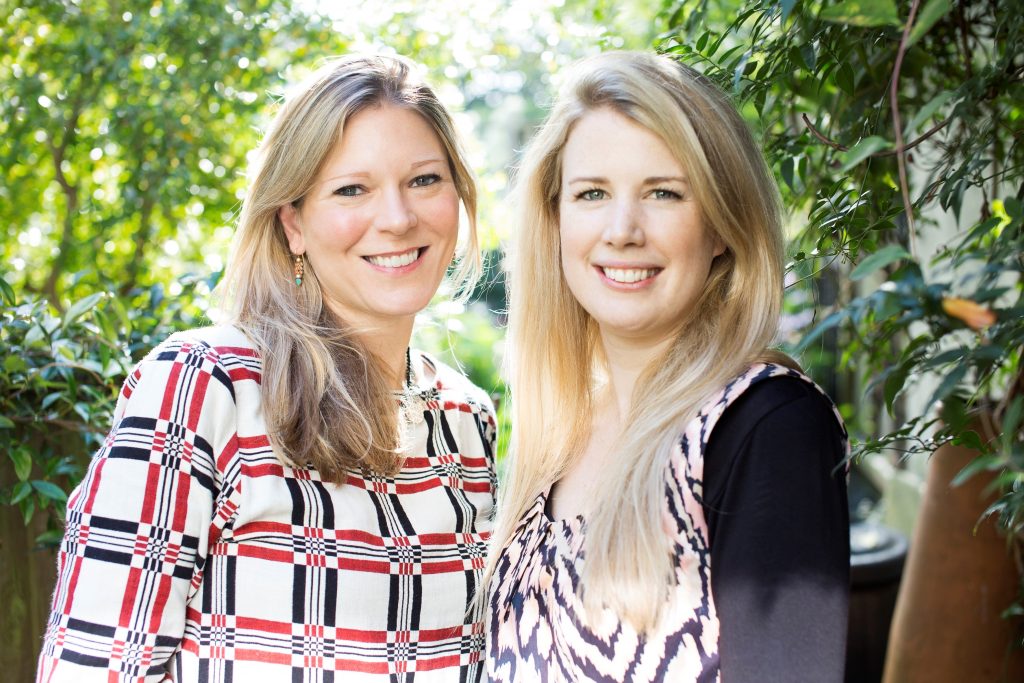
Caroline Eden and Eleanor Ford, authors of Samarkand. (Photo credit: Laura Edwards. Courtesy of Kyle Books.)
Caroline Eden (left) specializes in Central Asia and the Caucasus. She is a regular contributor to the travel, food and culture pages of the Telegraph, the Guardian, Financial Times, and Asian Art newspaper as well as a weekly travel page for London’s Metro. She has reported on key events in Kazakhstan and Azerbaijan for BBC Radio 4’s From Our Own Correspondent.
Eleanor Ford (right) is a food journalist who focuses on making world cuisines accessible to the home cook. She has been a recipe developer and editor for the Good Food Channel and BBC Good Food Magazine. She has judged The Guild of FoodWriters’ Awards, was local editor for Zagat’s Hong Kong guide and has been a Time Out restaurant reviewer.
All images featured in this interview have been attributed to their respective owners. Images lent to AHE by Kyle Books have been done so as a courtesy. Interview edited by James Blake Wiener for AHE. Special thanks is extended to Mr. Ron Longe of Kyle Books for helping to facilitate this interview. Unauthorized reproduction is strictly prohibited. All rights reserved. © AHE 2016. Please contact us for rights to republication.
